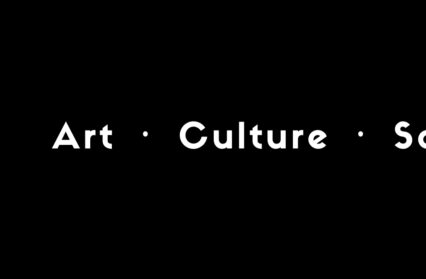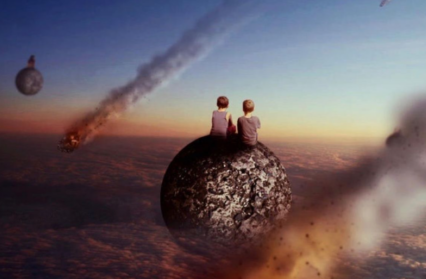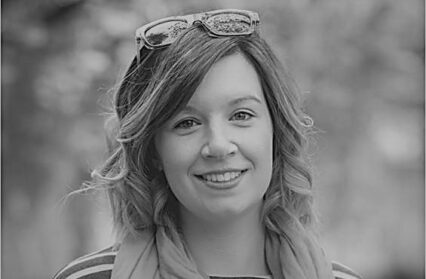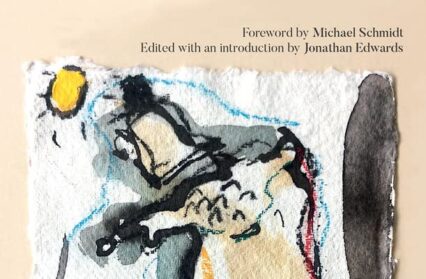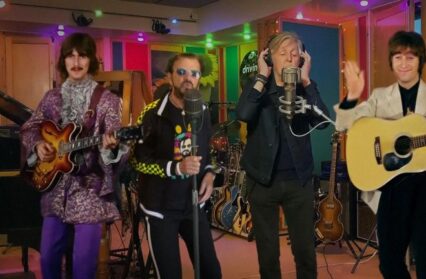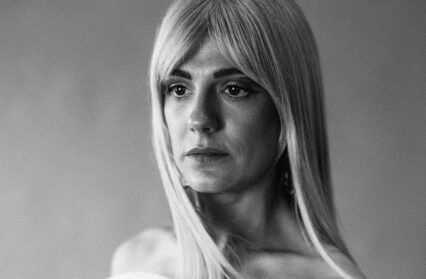The first time I learned of Istanbul was as an infant in the small library of my primary school. I was sat with a friend memorising capital cities. I don’t know what prompted in us this compulsion to inculcate the principal conurbations of countries we might never visit. Perhaps some natural prepubescent competitiveness or more likely that particular breed of competitiveness I see as the characteristic most attributable to the Welsh – the tendency to show off. (Richard Burton provides a brilliant example of the Welsh tendency to show off as well as its predominant flipside when he says that, ‘Welsh rugby elevates us into ecstasy when we are at our brilliantly arrogant best and drives us to near suicide when we’re not’).
For the record, my friend was a lot better than me at ‘the capital cities game’. And that’s the point I contrive to take from this remembrance. That instead of knowing dry facts about places, I wanted to seek and then discover them for myself. I like to think that our game played an ever so small part in my later predilection for travel. As if the images that took shape in my head back then, whenever either of us tested the other with what we adjudged to be a tough call, say, Eritrea or Benin – not forgetting that pronouncing each city correctly was just as important, a mark of distinction – was on some level responsible for illuminating the dark recesses of my psyche, those yet to be inhabited by consciousness, to shaped and informed by a world beyond the confines of a small post-industrial town.
I have been in Istanbul for four months now and it has started to make regular appearances in my dreams. It is a kaleidoscopic Istanbul, existing on an unconscious knife-edge, frequently interspersed with the output from a storehouse of other dream images; of Wales, for example, or any other place I have visited, the perfunctory and mundane and those that have set my heart beating. In a dream I might be walking through Galata and then turn a corner and find myself on Duke Street in Cardiff or walking a country road in Myddfai, and then at dusk amongst the fishermen along the Bosphorus I might suddenly see the vast stretch of Los Angeles, the endless blaze of terrestrial light as seen from Mulholland Drive in the Santa Monica Mountains.
I have wondered how much of my relationship to Istanbul has been dictated by the events that have taken place at Gezi Park and Taksim Square. In The White Review, Alexander Christie-Miller said it well when he stated that:
Living through a moment of history and strife in a foreign country changes your relationship to it. It is like witnessing a friend going through an emotional trauma: it can either repel you or pull you closer.
It has certainly pulled me closer to Istanbul. I have a staunch interest in Turkey’s politics, history and culture, one that outstrips, rightly or wrongly, the interest in my own country. However, there is something else that pulls you to this city, something beyond Occupy Gezi, even beyond its Byzantine and Ottoman heritage.
I had visited Istanbul twice before moving here. Until then it had remained more or less the same in my imagination as the pictures and paintings I saw of it in the library of my primary school that day, most of which were of its former incarnation as Constantinople. Over the years the city become a collage naïvely assembled from watching films, the news or documentaries, from visiting Paris, the Alhambra Palace, Tangiers, Marrakech and Oran. It was Istanbul as Frankenstein’s Monster and it haunted me, creating an expectation of a future experience, a potentiality in which it would be fully realised. This ill-formed version of Istanbul was a memory of the future.
***
The metro stations of Istanbul become one giant Turkish bath during the summer. An invisible cushion of stagnant air smothers commuters. It seems the metro system runs far deeper than the London Underground or Paris Métro. Maybe this is due to Istanbul being built on seven hills. Stepping off escalator after escalator, turning corner after corner, a barrier, maybe two, another escalator, another corner – it’s like a bad dream. At Taksim however, the descent is assuaged by the constant crowds. You have to concentrate. But at others, like Şişhane or Hacıosman, which are marked by an ominous vacancy despite Istanbul’s population of fourteen-plus million – the emptiness makes the passage seem longer. Unlike the older sections of the London Underground, Istanbul’s metro stations are high and wide, tiled beige walls and grey tiled floors, with office lights in the ceiling and hardly no advertisements. Descending, I think of An American Werewolf in London, I think of the Hotel Occidental in Kafka’s Amerika, and then draw allusions to the work of Jung, of his famous dream of 1909 when sailing with Freud to America. I imagine the walls of the metro station are changing, getting older and older the farther down I go, until they are walls of Constantinople, Roman and then Byzantine, the floor turns becomes a mixture of dirt and dust, I see a few bones, broken pottery. Light fades.
It is the first week of August. Climbing the last flight of stairs out onto the Taksim Square, I walk faster to make cool the sweat showing through my t-shirt. I am relieved to breathe in air that, while not exactly fresh, is at least mobile, oxygenated by the trees of Gezi Park perhaps, which lies just off to the right as I exit. Police stand around the mouth of the metro. Some in civilian dress, but wearing baseball caps and hi-vis vests emblazoned with ‘Polis.’ They stand with uniformed colleagues, all of them wearing sunglasses. Sometimes the civilian-dressed police keep surveillance using the ever-present simit and sweetcorn stalls. Recently they arrested an anti-AKP newspaper seller on Taksim for beckoning to commuters. ‘Noise pollution’ was the official excuse for his detainment. Is Turkey a police state? I cannot speak for the rest of the country, but everyone I speak to thinks Istanbul is.
The police have been lined along the walls to the west of Taksim Square since they cleared it and Gezi Park of protesters. They also maintain the entrance to Taksim Caddesi, a cobbled street leading onto the backstreets that parallel Istiklal. There is a TOMA and several police buses. The police themselves are usually asleep inside the buses. Others sit or stand along the wall of Taksim Caddesi smoking cigarettes, chatting or using their mobile phones. One of the reasons for their continued occupation of this area is for strategic positioning. It is the entrance to Taksim Square, the place where most protest marches pass. The other reason is that there is a public toilet close by and given the number of police they in and out of them constantly as there are no other services available to them. I have seen some asleep on their shields on the floor. I have also been struck by how young some of them are. They look straight out of school.
I tend to avoid Istiklal Avenue the longer I am here. I get sick of the crowds and find the back streets far more interesting. It is here that you touch upon the hüzün Orhan Pamuk describes in his book, Istanbul: Memories of a City, and which I will come back to later.
There is another reason. Whenever I have walked down Istiklal recently I have found myself getting more and more frustrated at the widening jurisdiction of the police. You can get used to them on Taksim and outside the AKM near Gezi Park. You can understand that in some ways. But when they move deeper into Istiklal and Beyoğlu, Istanbul’s most prominent tourist district, and occupy the area outside Galatasaray High School, an armed officer stood guard at either end of a line of police buses, the peak of his baseball pulled down over his eyes, and a TOMA nearby – this on a sunny Saturday afternoon with the place packed out – it is clear that there is an intimidation campaign underway.
I had arranged to meet up with some friends to watch the pre-season friendly between Arsenal and Napoli. We found a bar around the corner from our usual watering-hole that had satellite television. Because it was so busy we were offered a room upstairs where there were only a few customers sat out on the balcony, none of which were watching television. This would turn out to be a stroke of luck in a way.
Before now I have mentioned how the clashes between police and protesters, instigated by a peaceful march or by the unpredictable and often baffling hostilities of the police have resembled a caper – if, as I said at the time, people hadn’t died and thousands been injured. That particular evening, all of us had arrived from different routes. We sat down and discussed the massive police presence and subsequently learned that they had started to shut down Istiklal. There were no protests that day and none of us had seen anything to warrant the closure of Istiklal and the police violence that followed. But this is the way things had been every weekend for the past four or five weeks. My friend Dermot captured the mood at the time when he said that he was sick of it. All we wanted to do was to enjoy a few beers with good company. Like thousands others, we kept venturing into Beyoğlu, hoping things would be different, but knowing full well by the numbers of police in the area that the same thing would happen.
When it started we had already stopped watching the football match and were leant over the balcony, using the panoply of flowers and plants as cover. Crowds of shoppers came running down the cobbled street that continues all the way down to Tarlabaşı Boulevard. The police formed a barricade at the top of the street; the entrance to Istiklal.
Given that this was another unprovoked act, and knowing that this area is home to some of Istanbul’s most diverse denizens, from transvestites to bikers, all of whom coexist in genuine altruism, as well as being a popular spot for tourists, it was no surprise to see them goad the police with songs, chants and gestures. Riot police ran down the street and for some reason charged at a table of white-haired men having dinner. They had them out of their seats and pushed them into a doorway, dinner plates smashing behind them. Then the police left. Back came the crowds along with some musicians who began to play their instruments in the middle of the street, people joined them and began dancing.
That was when the first teargas canister was fired. And the funny part of it was that when it came to a stop directly under our noses, we all stayed there looking at it, sparks shooting out, knowing exactly what it was, but somehow frozen. Looking back it reminds me of a Warner Bros cartoon, one where a Sylvester or Wile E. Coyote gets a bomb or dynamite placed in their hands at the last minute only for them to be somewhat hypnotised by the fuse.
We were called inside by the owners and they closed the doors to protect us from the gas. Maybe it’s symptomatic of us becoming used to the events that continue to transpire here, but as people rushed into the café and upstairs to use the toilets to wash their eyes, we continued with the game of foosball we’d started to play. And my point here is not that the police once again disrupted our night out or that of the thousands others. The wider issue here is that the normalisation of police crackdowns on the weekend seems to signal else – that the government are using what happened at Gezi Park to accelerate what appears to be an attempt to fundamentally change the culture of Beyoğlu.
Small businesses continue to suffer. Already financially strained by the ‘table operations’ of 2010, the construction work on Tarlabaşı Boulevard and now by the police crackdown following Occupy Gezi, cafes, bars, shops, and restaurants are struggling to make ends meet. And maybe that’s the point. If these local businesses are forced to close there is always a Starbucks or Nike franchise waiting. The fear is that slowly but surely the area, which is already being ‘sanitised’, will be turned into a soulless arcade of chain stores. That there exists a plan to build a roof over Istiklal would obviously underline such suspicions.
The culture of Istiklal and Beyoğlu is difficult to encapsulate in a pithy statement. It’s certainly unique, and not just to Istanbul. Though a well-worn cliché it is the people that make it the place that it is, a cauldron of competing voices, flowing like blood cells up and down the Avenue. But like Taksim Square, which, as one head-scarfed woman described as being the place where ‘everybody expresses freely their happiness, sorrow, their political and social views’, and which Erdogan, as Michael Kimmelman writes in The New York Times, wishes to ‘smooth out’ to create, ‘a big pedestrian plaza, with buried traffic…to remake it into a neo-Ottoman theme park,’ it would appear that the project is not limited to Taksim, but is intended to refashion the entire Beyoğlu district.
Earlier I mentioned Tarlabaşı Boulevard, a neighbourhood most Istanbullus consider a no-go area, particularly after sundown. Once home to Greeks and Armenians, it revelled in its prosperity until the 1940s and 1950s when, following on from a wealth tax that targeted non-Muslims, government policies led to a massive increase in the emigration of ethnic-Greeks and Armenians from the neighbourhood following the Istanbul Pogrom. Since then the area has become home to large numbers of Kurdish immigrants escaping poverty from south-eastern Turkey and who have integrated with communities as incongruous as Roma and transvestites, as well as and migrants from Iraq and other refugees from nearby war-torn countries. In short, Tarlabaşı has provides affordable shelter and protection for the city’s marginalised population.
In parts the community spirit is strong, yet there is a degree of lawlessness also. Migrant teenagers unable to find work succumb to glue sniffing, which is seemingly an epidemic in Tarlabaşı, with muggings and burglaries are frequent. A TOMA is stationed here permanently close to a police station on the edge of the six lane Tarlabaşı Boulevard – the only thing separating it from the more affluent and tourist-friendly Beyoğlu across the way.
Like much of Ottoman-era Istanbul, the historic wooden houses that make up the neighbourhood have fallen into neglect. (It is worth noting that Tarlabaşı is less than a mile away from the Istiklal Avenue and the 5-star hotels on Taksim.) Seven years after the area was targeted for urban renewal, work is well underway and given its central location, Tarlabaşı is a real estate investors dream. Beyoğlu’s mayor has already stated that he was the area to become the Champs-Élysées of Istanbul. Whether the historical buildings will be maintained as part of the project is unclear. Having visited the area recently, I noticed that many of the centuries old Ottoman houses already been marked for demolition and that the process has already begun. Only the shells of these evocative buildings along the boulevard remain and yet families continue to live inside them. There gangs of teenagers close by speaking a mix of Kurdish and Turkish, transvestites pass back at forth. If you needed further evidence of how unique this area is, neighbouring the demolition site is the Aynalı Çeşme, an Armenian Protestant church administered by a female chaplain. While its congregation is small in number much of the community hold the church in high regard.
Huseyin Kaptan, director of the Istanbul Metropolitan Planning and Urban Design Centre, has described the urban renewal plans for Tarlabaşı as ‘very aggressive and very wrong.’ He continues:
To keep the social structure safe, you need to involve the people. Contractors get to build some modern thing — could be a shopping mall, could be a high-rise — but they have no regard for the people living there.
Once again, it would seem that an opportunity for the cultural preservation of a highly significant heritage site lies in the path of an unstoppable wrecking ball belonging to the wealthy investors whose influence on Turkey’s ruling powers is unquestionable.
‘This transformation plan doesn’t pay any attention to these social realities,’ says Yasar Adanali, an urban scholar, consultant and activist. ‘Why not create social programs to help these people? Instead, they just take Tarlabasi as a problem zone, a cancer area that you need to erase from the map and rebuild for a completely new clientele.’
The pattern emerging at Tarlabaşı is all too familiar. Profit for faceless investors at the expense implemented socially endorsed projects with long-term goals that will not only provide a sense of worth to those living on the margins, but also restore and maintain Tarlabaşı’s unique history and culture.
***
I never wanted to be a backpacker. I dislike camping or sharing rooms in hostels. When I travel I’m more interested in touching upon the lost romance of trains and hotels, the chanciness that seems to go hand in hand with such places. Perhaps that’s why the Haydarpaşa Terminal on Istanbul’s Asian side resonates with me out of all the things I have seen here so far. I have yet to visit the building itself so my experience of it is restricted to the view from the Karaköy or Beşiktaş ferry to Kadiköy. And sometimes I think it would be better not to explore it.
In Istanbul: Memories of a City by Orhan Pamuk, the Nobel Prize winning author dedicates section 6 of the book to hüzün – the Turkish word for melancholy. With its root in Arabic, Pamuk goes on to describe how the Prophet Mohammed used it to define the year in which he lost both his wife and uncle, ‘Senettul huzn’; in other words, the year of melancholy. In this sense huzn or huzen (mentioned five times in the Koran) connotes more or less the same thing as the modern day Turkish hüzün. However, Pamuk notices ‘a small philosophical faultline developing over the next few centuries of Islamic history.’
Pamuk compares the hüzün felt by a Muslim when they have invested too much of themselves in the in ‘worldly pleasures and material gain’ with that of the second tradition rising out of Sufi mysticism. In this tradition, hüzün indicates the ‘spiritual anguish’ one feels when they are unable to get close enough to Allah, because they ‘cannot do enough for Allah in this world.’ Worldly concerns, such as death are not of concern to Sufis, ‘it is the absence, not the presence of hüzün’ that causes misery in other words, in the Sufi traditions, hüzün arises from one’s inability to experience it.
For Pamuk, hüzün is a condition particular to Istanbul and its people, and ‘not as the melancholy of a solitary person, but the black mood shared by millions of people together.’ He uses the metaphor of a child trying to see through a steam window as a starting point for the kind of emotion intrinsic to hüzün. However, the burning factor of hüzün is Istanbul’s glorious past. Seeing some similarity in Claude Lévi-Strauss’ Tristes Tropiques, of the ‘tristesse…a Westerner might feel as he surveys the vast, poverty stricken cities of the tropics’, Pamuk states that the ‘difference lies in the fact that in Istanbul the remains of a glorious past and civilisation are everywhere visible.’
When I see the Haydarpaşa Terminal, where the Orient Express would travel from to Aleppo, Damascus and Baghdad, my emotion is one to which we all are all prone, how is it possible to feel nostalgia for a world I never knew? Academics describe it as a postmodern condition, but I would say the feeling is closer to Pamuk’s interpretation of hüzün, of the poet and the ‘smoky window between him and the world.’
I have had the same feeling when crossing the Galata Bridge looking across towards the Golden Horn and seeing the Topkapı Palace, Hagia Sophia and Sultan Ahmed ‘Blue’ Mosque. A shudder of the mind: it is like stepping outside of clock-time; you feel a wholeness beyond description, and anything written here is so far from that experience.
***
For many Istanbullus, ‘history has become a word with no meaning,’ writes Pamuk. ‘They take stones from the city [Constantinople] walls and add them to modern materials to make new buildings.’ Haydarpaşa too, has for many years been of much interest to developers. The last intercity train departed the terminal in February 2012. Plans proposed by private investors, Çalık Group, envisage turning the Haydarpaşa building into a hotel with the surrounding area becoming a shopping area and ‘cultural and tourist hub with five-star hotels with a bed capacity of 9000,’ including neo-Ottoman area with Venetian canals. Running parallel to the terminal, the Haydarpaşa Port is to become Turkey’s biggest yacht marina and overlooking all of this development will be seven tulip-shaped skyscrapers with copper towers (to represent the seven hills Istanbul was built on). This is part of my reasoning for not wanting visit the Haydarpaşa Terminal and to witness what will be no more, becoming instead an ostentatious paean to the former glories of the Ottoman Empire, while ignoring the neglected historical artefacts of that period such as the houses in Tarlabaşı that require restoration.
Pamuk writes of the old black and white films, love stories, of the heroes of these films, that there are only two ways for them to face the impasse of hüzün: ‘either they go for walk along the Bosphorus or they head off into back streets of the city to gaze at ruins.’
I always choose the Bosphorus, or Boğaz in Turkish. Boğaz also means ‘throat’ and during the Fifties when there was a whooping cough epidemic in Istanbul, the doctor’s advice would often entail telling the parents to take their child on the Boğaz for some fresh air. Pamuk says that this may account for the fact that old Greek fishing village of Tarabya – where, incidentally, I work – was formerly known as Therapia. Either way, a walk along the Bosphorus is, for me, something of an elixir. Looking at it I think of the people that came to settle here around 8500 years ago and think again of Pamuk’s statement: ‘history has become a word with no meaning.’ With a history that long it is no surprise the landscape has changed so much. For the same reasons, it may add provide some rationale as to why some Istanbul residents see history as a word with no meaning and why therefore the city continues to change.
Turkey’s government can certainly be accused of failing to recognise the importance the city’s history. For Pamuk, Istanbul’s past and hüzün closely linked, and the ‘fastest flight from the hüzün of the ruins is to ignore all historical monuments.’ The Marmaray Project began in 2004 and involves building a rail tube under the Bosphorus to connect Europe and Asia. The digging led to the discovery of two settlements dating back 8500 years and perhaps most significantly the fourth-century Port of Theodosius from the Byzantine era, including 36 sunken ships and some 40,000 artefacts (a find that Erdogan dismissed as some “pots and pans” before complaining about how it had delayed the Marmaray Project). Gezi Park and Taksim Square, Haydarpaşa and the Emek Theatre; the continued actions of the government to ‘ignore historical monuments’ means that hüzün freighting the city, that its people breath in, is much greater, for as Pamuk says, it ‘rises out of the pain that they feel for all that has been lost.’
Banner illustration by Dean Lewis



